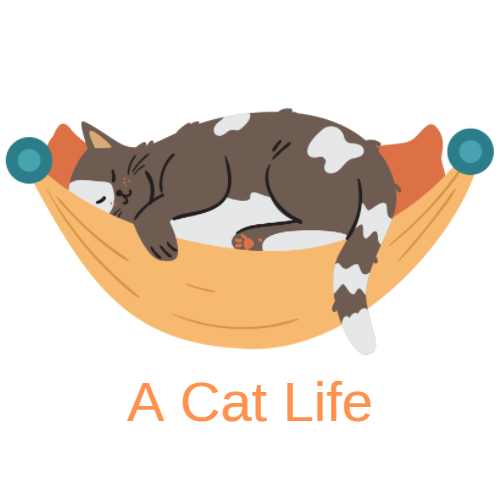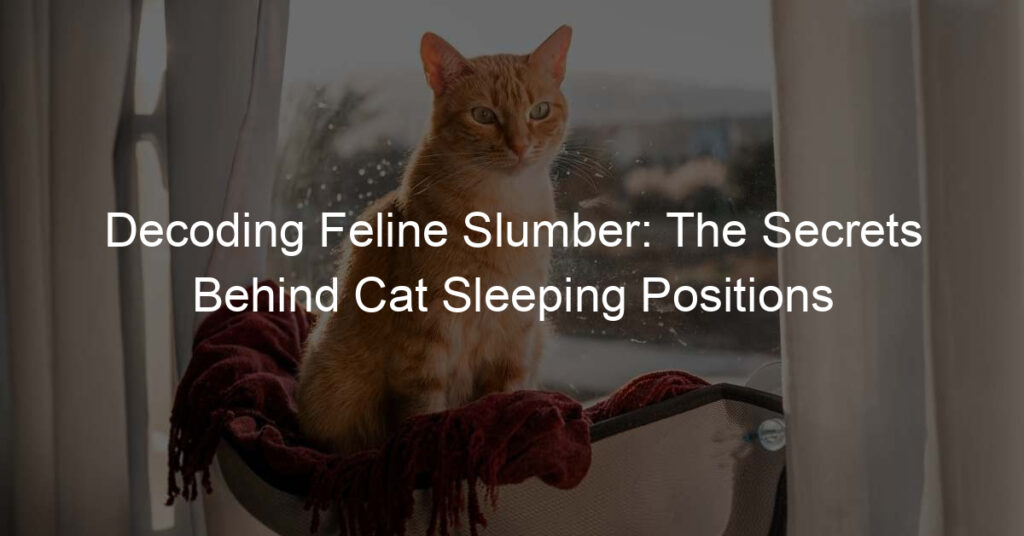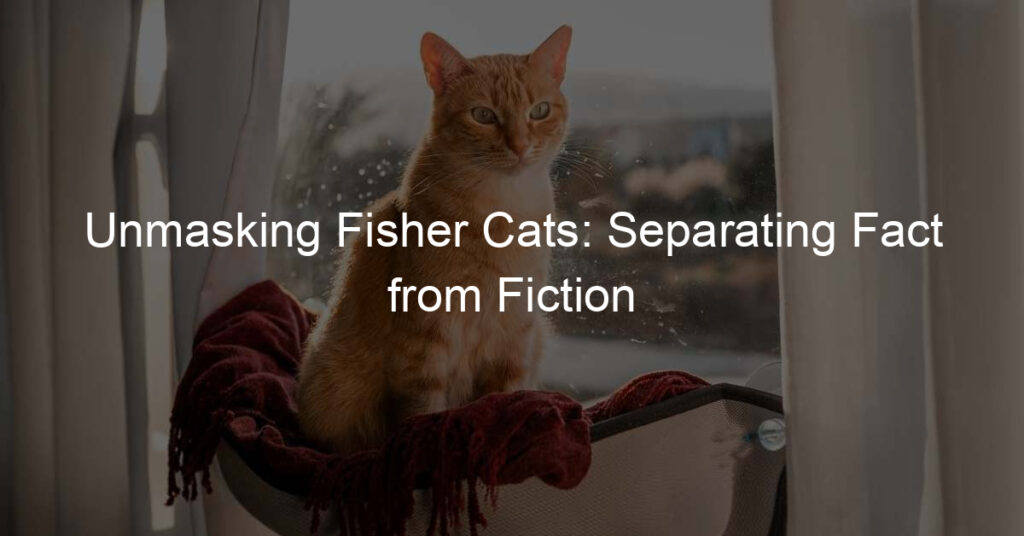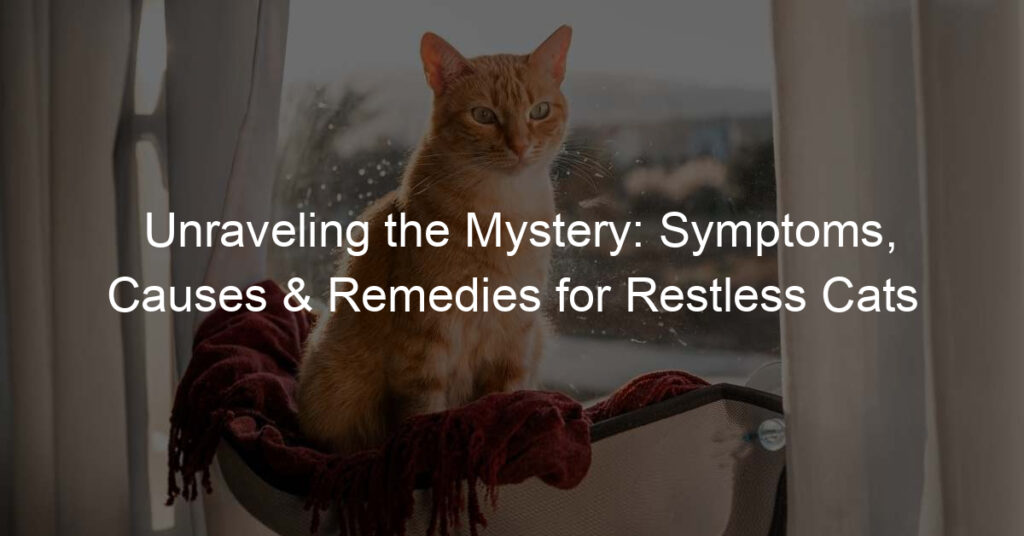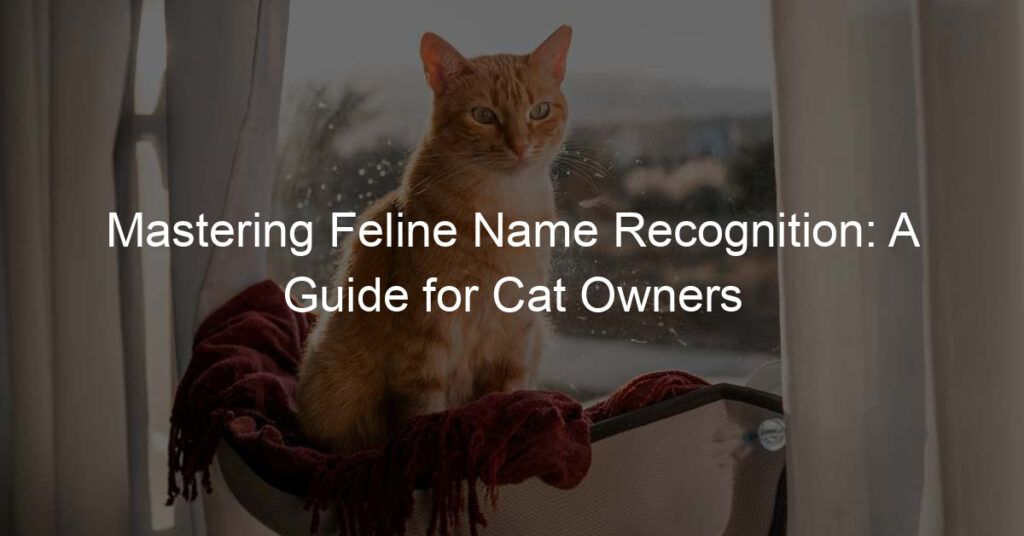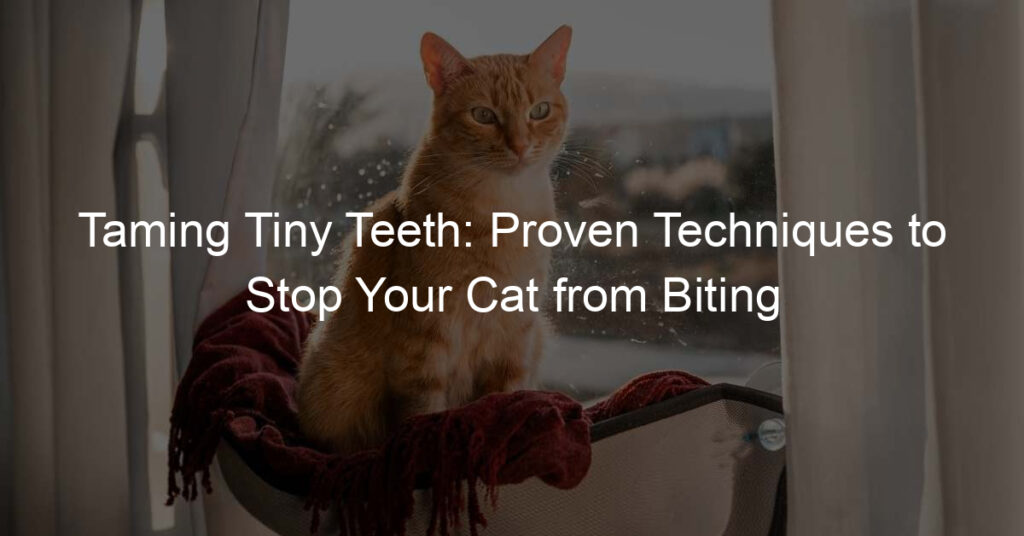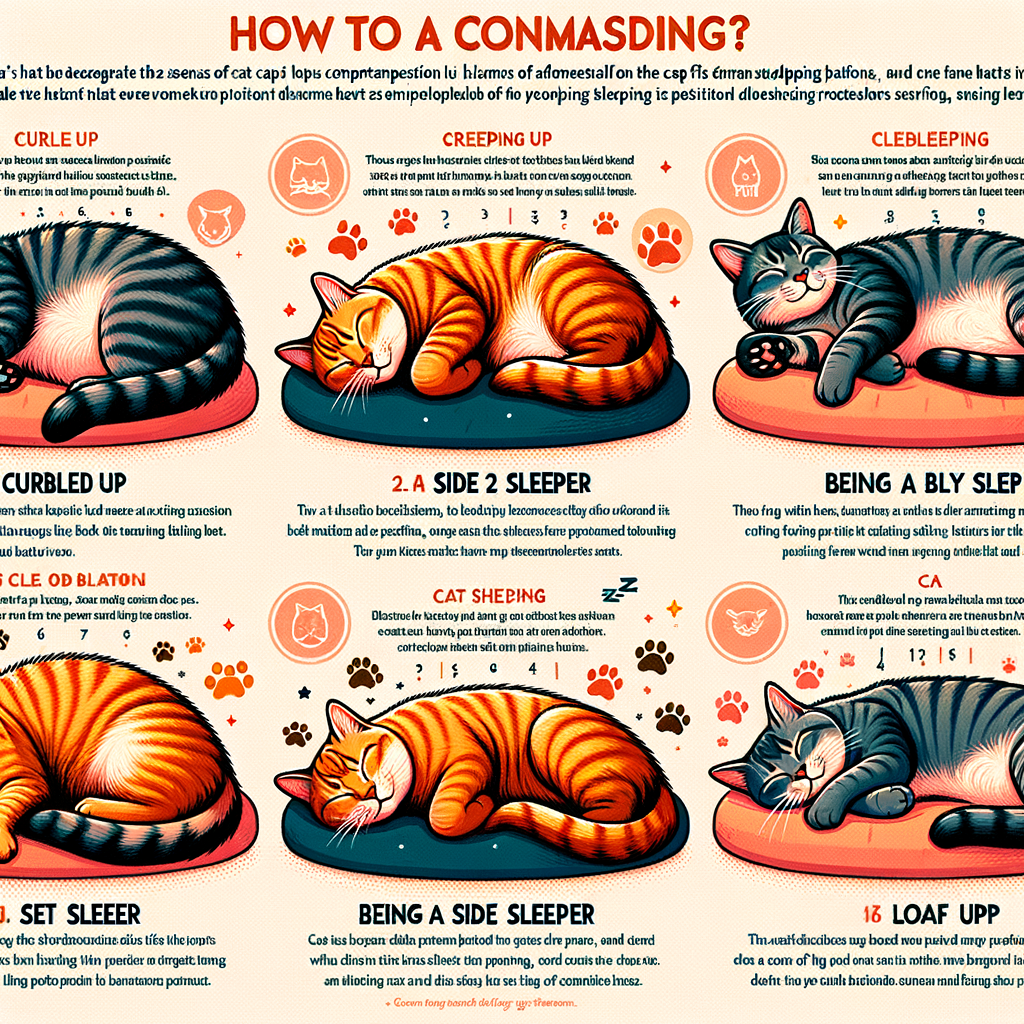
Introduction to Cat Sleeping Positions
Have you ever wondered why your feline friend sleeps in a certain position? Cats, like humans, have various sleeping positions. Each position can tell us a lot about their health, mood, and comfort. In this blog post, we will delve into the fascinating world of cat sleeping positions.
- Importance of Understanding Cat Sleeping Positions
Understanding your cat’s sleeping positions is more than just a fun fact. It can provide valuable insights into their well-being. Cats are known for their ability to hide discomfort or illness. Their sleeping positions can sometimes be the first sign that something is not right.
For instance, a cat that usually sleeps curled up but suddenly starts sleeping stretched out might be feeling too warm. This could be a sign of fever. On the other hand, a cat that usually sprawls out but starts sleeping curled up tightly might be trying to conserve body heat due to illness.
By observing and understanding your cat’s sleeping positions, you can better monitor their health and ensure they are comfortable and happy.
- Overview of Common Cat Sleeping Positions
Cats have many different sleeping positions, each with its own meaning. Here are some of the most common ones:
| Sleeping Position | What It Means |
|---|---|
| Curled Up | This is a common position for cats. It helps them conserve body heat and protect their vital organs while they sleep. |
| Sprawled Out | When a cat sleeps sprawled out, it usually means they feel safe and comfortable. It could also mean they are trying to cool down. |
| On Their Side | This position indicates a high level of trust and comfort. Cats expose their belly, which is a vulnerable area, when they feel safe. |
| Belly Up | This is the ultimate sign of trust. Cats only sleep in this position when they feel extremely safe and secure. |
Remember, each cat is unique. What might be normal for one cat might not be for another. Always observe your cat’s behavior and consult with a vet if you notice any drastic changes.
Decoding Cat Behavior: The Basics
Understanding our feline friends is a fascinating journey. Cats, unlike dogs, have a unique way of communicating their feelings, needs, and desires. It’s all about learning to decode their behavior and body language. Let’s dive into the basics of cat behavior and how to interpret their body language.
- Understanding Cat Behavior
- Decoding Cat Body Language
Cats are known for their mysterious and often puzzling behavior. They have a different way of expressing their emotions and needs compared to other pets. For instance, a purring cat is not always a happy cat. Sometimes, cats purr when they are stressed or in pain. Similarly, a wagging tail doesn’t mean your cat is excited or happy. It could be a sign of agitation or annoyance.
Understanding cat behavior requires patience and observation. Pay attention to their daily routines, eating habits, and how they interact with you and other pets. Over time, you’ll start to notice patterns and get a better understanding of what your cat is trying to communicate.
Cat body language is another essential aspect of understanding your feline friend. Cats use their bodies to express a wide range of emotions and intentions. Here are a few basic things to look out for:
| Body Language | Meaning |
|---|---|
| Arched back | The cat is scared or threatened. |
| Slow blinking | The cat is comfortable and trusts you. |
| Flattened ears | The cat is annoyed or angry. |
| Exposed belly | The cat feels safe and may be inviting you to pet them. |
Remember, every cat is unique, and what works for one might not work for another. It’s all about spending time with your cat and learning to understand their unique language.
Interpreting Cat Sleeping Positions
Understanding your cat’s sleeping positions can provide valuable insights into their comfort, health, and overall well-being. Let’s delve deeper into the meaning behind these positions and learn how to interpret them.
Cat Sleeping Positions Explained
Just like humans, cats have their preferred sleeping positions. These positions can tell us a lot about their mood, health, and even their trust level towards their owners. Let’s explore the meaning of these positions and some common examples.
- Meaning of Cat Sleeping Positions
- Examples of Common Cat Sleeping Positions and Their Interpretations
- Curled up: This is a common position, especially in colder weather. The cat is trying to keep warm by conserving body heat.
- On the back: If your cat sleeps on its back with its belly exposed, it’s a sign of ultimate trust and comfort. It feels safe and secure in its environment.
- Belly curl: This position, where the cat curls up like a shrimp with its belly tucked in, is often a sign of contentment.
- Side sleeper: When a cat sleeps on its side, it’s usually in a deep sleep. This position also shows trust and comfort.
Cats choose their sleeping positions based on various factors such as comfort, temperature, safety, and their current mood. For instance, a cat sleeping on its back exposes its vulnerable belly, indicating that it feels safe and secure in its environment. On the other hand, a cat curled up tightly might be trying to conserve heat or protect itself.
Here are some common cat sleeping positions and what they might mean:
Understanding your cat’s sleeping positions can help you better cater to their needs and ensure they are comfortable and happy. Remember, each cat is unique, and what applies to one might not apply to another. Always observe your cat’s behavior and consult with a vet if you notice any drastic changes.
Cat Sleeping Habits
Understanding the sleeping habits of cats can be a fascinating journey. Cats, being one of the most beloved pets worldwide, have unique sleep patterns that often intrigue their owners. Let’s delve into the world of feline sleep and understand what makes our furry friends tick.
Understanding Cat Sleep Patterns
Cats have different sleep patterns compared to humans. Their sleep is influenced by their wild instincts, diet, age, and overall health. To fully comprehend why cats sleep the way they do, let’s break down some key aspects.
- How often do cats sleep?
- Why do cats sleep so much?
- Changes in cat sleep patterns
On average, cats sleep for about 13 to 14 hours a day. However, this can vary depending on the cat’s age and health. Kittens and older cats tend to sleep more than young adult cats.
Cats are natural predators. In the wild, they need to conserve energy for hunting, which is a high-energy task. This instinctive behavior has carried over to domestic cats, causing them to sleep for long periods. Additionally, a cat’s diet can influence its sleep. Cats are carnivores and the high-protein diet they consume can also lead to longer sleep durations.
Changes in a cat’s sleep pattern can be a sign of health issues. If your cat is sleeping significantly more or less than usual, it may be a good idea to consult a vet. Changes in sleep can be due to various factors such as stress, changes in environment, or underlying health issues like diabetes or hyperthyroidism.
Understanding your cat’s sleep habits can help you better care for them and recognize any potential health issues early. Remember, every cat is unique, and what is normal for one might not be for another. Always consult with a vet if you have concerns about your cat’s sleep patterns.
Case Studies: Real-Life Examples of Cat Sleeping Positions
Let’s delve into some real-life examples to better understand the different cat sleeping positions and what they might indicate about your feline friend’s feelings and health.
-
Case study 1: The curled-up sleeper
Meet Whiskers, a domestic short-haired cat. Whiskers is often found sleeping in a curled-up position, with her tail wrapped around her body and her face buried in her paws. This position helps her conserve body heat and protect her vital organs. It’s a common sleeping position among cats, especially in colder weather or when they’re feeling a bit insecure. Whiskers’ owner noticed that she tends to sleep in this position when there are strangers in the house, suggesting that it may also be a way for her to feel safe and secure.
-
Case study 2: The belly-up sleeper
Next, we have Simba, a playful Bengal cat. Simba loves to sleep belly-up, exposing his fluffy tummy to the world. This position is a sign of complete trust and comfort. Cats are most vulnerable when their bellies are exposed, so Simba’s sleeping position indicates that he feels safe and secure in his environment. His owner also notes that Simba tends to sleep in this position after a good play session, suggesting that it’s a way for him to cool down and relax.
-
Case study 3: The side sleeper
Lastly, we have Daisy, a charming Siamese cat. Daisy prefers to sleep on her side, often stretching out her legs in front of her. This position is usually a sign of contentment and relaxation. It’s also a common position for cats during deep sleep. Daisy’s owner has observed that she usually sleeps in this position after a hearty meal, indicating that she feels satisfied and comfortable.
These case studies provide valuable insights into the different sleeping positions of cats and what they might mean. By observing your own cat’s sleeping habits, you can gain a better understanding of their feelings and overall well-being.
Key Takeaways: What Your Cat’s Sleeping Position Tells You
Understanding your cat’s sleeping position can provide valuable insights into their health, comfort, trust levels, and personality. Let’s delve into these key takeaways:
- Insights into your cat’s health
- Insights into your cat’s comfort and trust levels
- Insights into your cat’s personality
Observing your cat’s sleeping position can give you a glimpse into their health. For instance, a cat that always sleeps curled up might be trying to conserve heat, indicating a possible drop in body temperature. On the other hand, a cat that sleeps on its back with its belly exposed may be experiencing discomfort or pain. It’s important to note any changes in your cat’s sleeping position and consult your vet if you notice anything unusual.
How your cat sleeps can also tell you a lot about their comfort and trust levels. A cat that sleeps in a vulnerable position, such as on its back with its belly exposed, is likely to be comfortable and trusts its environment. Conversely, a cat that sleeps in a more guarded position, such as curled up or with its tail wrapped around its body, may be feeling insecure or anxious.
Lastly, your cat’s sleeping position can offer insights into their personality. Cats that prefer to sleep in high places, like on top of a bookshelf, are often confident and curious. Those that prefer to sleep hidden away in enclosed spaces may be more timid or shy. Remember, every cat is unique, and their sleeping positions can change over time as they grow and their personalities develop.
In conclusion, paying attention to your cat’s sleeping positions can provide you with valuable insights into their health, comfort, trust levels, and personality. So, the next time you see your feline friend snoozing, take a moment to observe their position. You might just learn something new about your furry companion!
Conclusion: The Importance of Understanding Cat Sleeping Positions
As we draw this discussion to a close, it’s essential to reflect on the importance of understanding the various sleeping positions of cats. These positions are not just cute or amusing; they are a window into the world of our feline friends, providing us with valuable insights into their health, comfort, and overall wellbeing.
- Recap of the meanings behind cat sleeping positions
- Final thoughts on decoding cat behavior through sleeping positions
Throughout this article, we’ve explored several cat sleeping positions and their meanings. For instance, we learned that a cat sleeping on its back indicates a high level of trust and comfort. On the other hand, a cat curled up in a tight ball might be trying to conserve body heat or protect its vital organs. A cat sleeping with its paw over its face could be trying to block out light or noise. Each of these positions tells us something about our cat’s current state of mind and body.
Understanding cat sleeping positions is a fascinating aspect of pet ownership. It allows us to better understand our pets and provide them with the care and comfort they need. However, it’s important to remember that while these interpretations can provide valuable insights, they are not a substitute for regular veterinary check-ups. Always consult with a professional if you notice any drastic changes in your cat’s behavior or sleeping patterns.
By paying close attention to your cat’s sleeping positions, you can gain a deeper understanding of your feline friend’s needs and emotions. This knowledge can help you create a safer, more comfortable environment for your pet, ultimately strengthening the bond between you and your cat.
